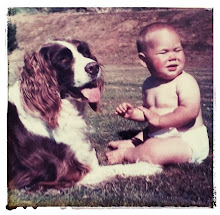Aran's lecture
'Research methods' - Introduction to methods-related terminology
Three types of research methods-
- Qualitative research
- Quantitative research
- Mixed research (qualitative & quantitative study)
- Heuristic research (put yourself in the situation)
- Phenomenological research (describe objectively)
- Hermeneutical research (looking at the context around the situation)
- Random sampling
- Selected sampling
- Participant observer - collection & analysis of field data
- Direct observation - physically or using camera/other media
- Interviewing - structured or unstructured (set questions)
- Case studies
- Data research
- Experience research- research as exploratory or investigative process - repetition/test/variation (change external factors)/exploratory research (set specific rules)
- Analysis of examples - explain why these examples
- Descriptive diagnosis
- Diagnostic research
- Collection
- Replication - naturalistic is copying and learning a technique
- Hypothesis testing
- Variable-based research - how a variable effects what is being done
Rachael's lecture
Look at the media in terms of what you can glean from them and how you can apply these things to your own work.
Often research is secondary- re-presentation- DVD, photo etc. It is difficult to work out your criteria from second-hand information so she suggests going to see the work live.
Set of criteria (descriptions until set) could be aspirational- how you could want to look at your or others' work.
Looking/re-looking through representation/writing/redefine.
Roni Horn
You Are The Weather | Dead Owl | Ant Farm | This Is Me, This Is You | Asphere
- Tautological (needless repetition)
- Viewing mechanisms
- Empirical (derived from experiment and observation rather than theory)
- Parallax (the apparent displacement of an object as seen from two different points that are not on a line with the object)
- Seeing - appearance & understanding; habitual
- Looking - searching to understand/investigate; the gaze; mechanical aspect of thinking
We were divided up into 4 groups and given a word. We were asked to name as many artists as we could that full under that description. We had 20 minutes to do this, then we had to think of the antithesis of that word and had another 20 minutes to name artists that fell under that category. The words were:
- Political | Apolitical/politically inert (my group)
- Narrative
- Traditional
- Figurative

No comments:
Post a Comment